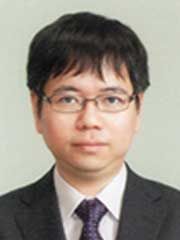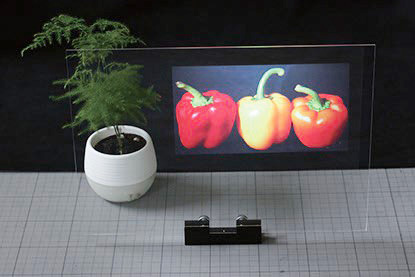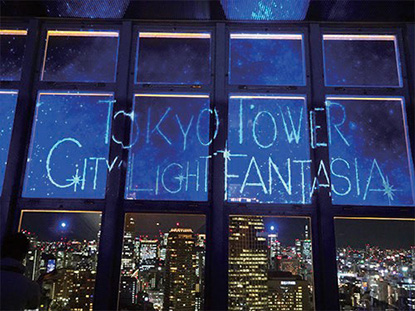Research Results
New media that can project information
Developing transparent film for screens FY2017

- Masatoshi Tokita (Associate Professor, Department of Chemical Science and Engineering, School of Materials and Chemical Technology, Tokyo Institute of Technology)
- S-Innovation
- Strategic Promotion of Innovative Research and Development
Development of advanced information communications technology using photonics polymer Project Manager, Development of new device technology through polymer orientation control in nanometer-scale (2014 ‒ 2018)
Development of mostly colorless transparent film for screens
Innovative information communications technology has to be developed to overcome the limitations in conventional information communications technology to realize safe and secure low-carbon society that consumes less energy. "Development of advanced information communications technology using photonics polymer" is one of the themes in the research and development projects of "Strategic Promotion of Innovative Research and Development"(S-Innovation), JST. This theme aims to establish key technologies for a more advanced communication society through the innovation of photonic communication technology that forms the backbone of information communications technology in the 21st century.
One of the topics producing significant results in this research theme is the development of new device technology through polymer orientation control in nanometer-scale. Associate Professor Masatoshi Tokita and his team have succeeded in developing and commercializing colorless transparent film screens. The transparent film screens have a track record in practical applications at event facilities in various locations so that they are expected to be developed in more diverse ways so as to contribute to information displays in society.
Uniformly dispersing nanoparticles with refractive index as high as that of diamond
Conventional transparent film screens are able to project images; however, their transmittance is less than 70%. Associate Professor Tokita and his team have succeeded in developing transparent film screens with transmittance of more than 90%. When this screen is adhered to a window, one can view the outside scenery and images such as advertisements projected onto the screen at the same time. The developed film screens can be used as a whole new form of information display tool.
This film is transparent but works as a screen because high refractive index particles are uniformly dispersed in the polymer film by technology developed by the team. Light can be scattered more significantly if the difference in refractive indices between the nanoparticles and the polymer matrix is large, allowing the film to project images. If the nanoparticles are homogeneously dispersed in the film, the film becomes so transparent that the reverse side of the film appears through the film. The team succeeded in overcoming the difficulty of homogeneous dispersion of nanoparticles in a polymer matrix.
JXTG Nippon Oil and Energy Corporation (formerly JX Nippon Oil and Energy Corporation) utilized the technology of transparent screen films to introduce the screen on the market under the trademark of "KALEIDO SCREEN®."

The screen film on the glass plate is so transparent that the planter behind the screen can be clearly seen, although an image is projected on the screen film.
Large-screen display with nonconventional functions
Large, cheap, and highly-functional polymer films are now the object of development at many companies. The team is attempting to develop various types of optical elements of large-area and high performance optical functional films. They have already developed organic polymer films that reflect all visible light just like a mirror, or red, green, and blue-color lights individually, and films that expand the viewing angle of liquid-crystal displays. In addition, they have succeeded in developing transparent electrode films that are polymer films onto which nanometer-wide aluminum wires are attached. These technologies can produce functional optical polymer films.
Expanding the applications of this technology to developing the next technology
"KALEIDO SCREEN" has drawn much interest and attention in society. It has been demonstrated in large-scale projection mapping events at various locations and has been well-received. For example, it has been placed on glass window panes at Tokyo Tower and the glass panes of aquarium tanks at the Yokohama Hakkeijima Sea Paradise. From this time forward, the use of "KALEIDO SCREEN" will not be limited to spatial performances and will be expanded to signage displaying public information and product advertisements.
The present screen films largely scatter lights forward. If the particle size and other factors are controlled to scatter light backward, the films may be used as automobile head-up displays for which increased demand is anticipated in the future. The collaborating companies are making efforts to achieve practical applications of this technology. The coming developments of these technologies are the subject of much attention.

Tokyo Tower viewing platform
